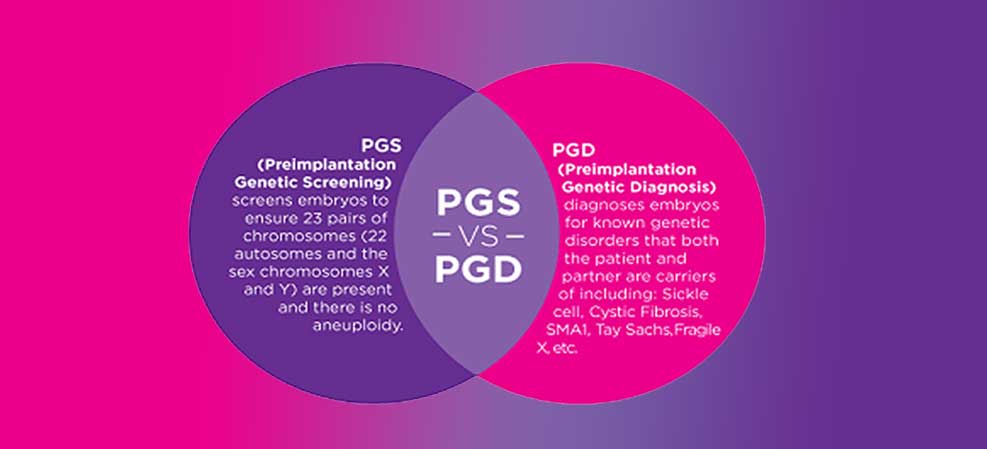PGD (Preimplantation Genetic Diagnosis) and PGS (Preimplantation Genetic Screening) play vital roles in the context of surrogacy, ensuring the health and viability of embryos.
In the realm of surrogacy the utilization of PGD and PGS holds importance in ensuring the well being and viability of embryos. Lets delve into these methods and their advantages;

PGD (Preimplantation Genetic Diagnosis);
Objective; PGD aims to identify genetic conditions or mutations in embryos before implantation. Embryos come into existence via the intricate method of in vitro fertilization (IVF).
- Only one cell is extracted / boipsed from each embryo for analysis.
- Biopsied cells undergo scrutiny to detect irregularities.
- Only embryos free from identified conditions are selected for transfer.
Advantages;
Disease Prevention; PGD helps prevent the inheritance of genetic disorders by offspring.
Reduced Miscarriage Risk; Identifying normal embryos decreases the likelihood of miscarriage.
Family Planning; PGD allows for gender selection if desired by parents.
Optimizing Pregnancy Outcome: Selecting robust embryos enhances the likelihood of a successful pregnancy
PGS (Preimplantation Genetic Screening);
Objective; PGS screens embryos for abnormalities.
Procedure;
- Similar to PGD, embryos are generated through IVF procedures.
- Cells are taken out from each embryo for analysis.
- Abnormalities are identified through screening.
- Normal embryos are considered for transfer.
Benefits;
Lower Risk of Aneuploidy: PGS reduces the likelihood of embryos having abnormal chromosome numbers.
Enhanced Implantation Success: Opting for embryos with the appropriate chromosome count heightens the likelihood of successful implantation.
Reduced Miscarriage Incidence: PGS mitigates the risk of miscarriage stemming from chromosomal irregularities.
In conclusion, both PGD and PGS contribute to enhancing the safety and success of surrogacy by ensuring that only healthy embryos are transferred.




